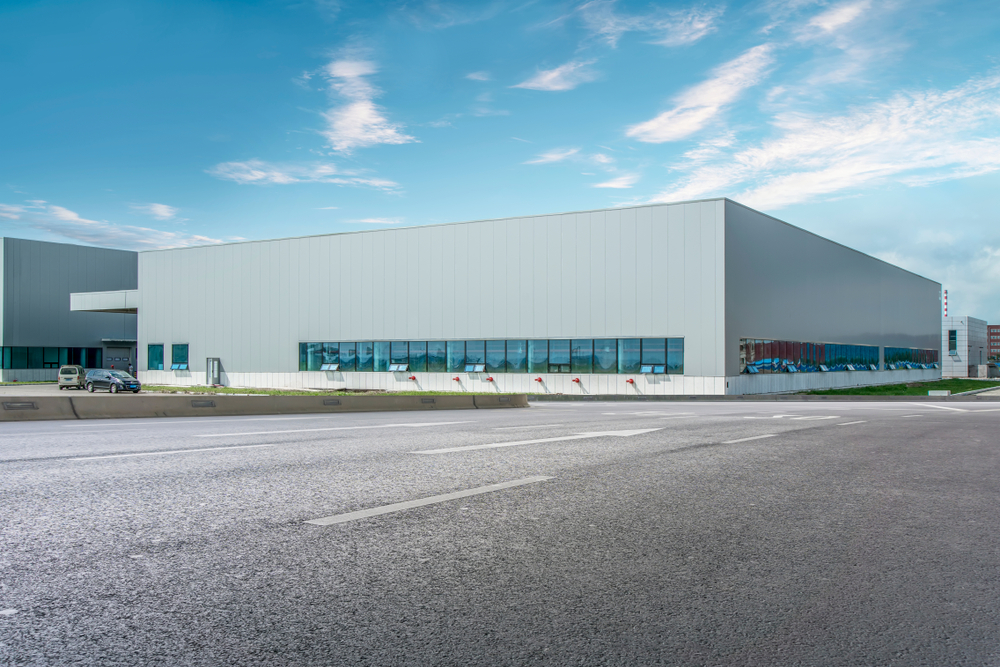The U.S. industrial real estate sector, long seen as the crown jewel of commercial property, has hit a turning point. After years of rapid rent growth and near-record low vacancies, the pace is slowing. Supply is now outpacing demand in many regions, creating a more competitive leasing environment.
For investors who own industrial properties or are interested in purchasing one, this is not the time to retreat – it’s the time to adapt, negotiate, and reposition for long-term success. The right strategies, financing structures and market intelligence can turn a cooling cycle into an opportunity-rich environment.
Understanding the Market Shift
Nationally, absorption rates have cooled as newly completed industrial projects flood the market. While some metros remain strong, especially those tied to critical logistics corridors, others are experiencing rising vacancy rates for the first time in years.
Key drivers of the slowdown:
- Developers overshot demand forecasts.
- Certain manufacturing and e-commerce segments have paused expansion plans.
- Economic uncertainty has slowed tenant decision-making cycles.
However, this shift doesn’t mean industrial is a bad play – it means investors need more precision in property selection and financing decisions.
Investor Impact: What This Slowdown Means for Your Portfolio
- Leasing timelines may lengthen, especially in oversupplied submarkets.
- Rental rate growth is slowing; some landlords are offering concessions to secure tenants.
- Tenant credit quality is more important than ever – strong tenants anchor portfolio stability.
Savvy investors are adjusting acquisition models to account for longer lease-up periods and slightly lower rent escalations in the near term.
Opportunities Amid the Slowdown
The cooling market is opening the door to investor advantages that didn’t exist 18 months ago:
1. Buying at Better Pricing
Owners facing longer vacancies or construction debt pressure may be willing to negotiate significant discounts, especially if you can close quickly.
2. Locking in Long-Term Stability
Secure long-term leases now while tenants are more willing to commit to favorable terms, including annual escalations that beat inflation.
3. Targeting Underserved Secondary Markets
Some secondary metros with slower construction pipelines are still seeing healthy absorption. Investing there can mean less competition and better returns.
Deep-Dive: Strategic Financing Solutions
In this cycle, your financing approach can be the difference between a property that cash flows from day one and one that drains reserves.
Industrial Real Estate Loans
Seek loan products with flexible prepayment options, so you can refinance when rates improve without heavy penalties.
Industrial Mortgage Lenders
Work with lenders who specialize in industrial, as they understand the nuances of the sector and may offer non-recourse structures for well-leased properties.
Industrial Financing for Brokers
If you’re a broker representing investor clients, explore funding programs designed for fast closes – especially in competitive bid scenarios.
Loan Programs Tailored for Opportunity
- Industrial Investor Loan Programs – Ideal for value-add or repositioning plays where you need renovation capital.
- Industrial Commercial Mortgage – Offers longer amortizations to improve cash flow in markets where rent growth is leveling.
- Industrial Broker Loan Options – Provides brokers with a toolkit to secure financing for investors quickly.
Expanded Risk Mitigation Strategies
In an oversupplied market, risk management moves from “best practice” to non-negotiable.
1. Stress-Test Your Deals
Model rent declines, extended vacancy periods, and higher operating expenses before committing.
2. Diversify Tenant Mix
A building leased entirely to a single e-commerce operator is riskier now than a multi-tenant mix with manufacturing, distribution, and light assembly.
3. Negotiate from Strength
In buyer-favorable markets, push for:
- Extended due diligence timelines
- Seller financing
- Repair credits
- Lease guarantees from sellers
Tactical Plays to Outperform
A cooling cycle rewards creativity. Here’s how top investors are staying ahead:
- Adaptive Reuse – Repurpose vacant industrial into last-mile distribution, cold storage, or light manufacturing.
- Spec-to-Suit Development – Partner directly with tenants to build exactly what they need, minimizing vacancy risk.
- Capital Improvements for Competitive Edge – Add dock doors, upgrade lighting, or install energy-efficient systems to attract tenants faster.
- Sale-Leaseback Opportunities – Acquire facilities from owner-occupiers looking to unlock capital, then lease the space back to them.
Regional Variations: Where to Play and Where to Pause
- Play: Markets with strong port access (Savannah, Houston), intermodal hubs (Kansas City, Memphis), and high-growth metros (Dallas-Fort Worth, Phoenix).
- Pause: Submarkets with record construction deliveries and slowing lease activity—often in parts of Southern California and certain Northeast hubs.
The Role of Lender Search in a Cooling Market
When the market shifts, your lender relationships matter more than ever. Lender Search helps you:
- Identify industrial mortgage lenders quickly.
- Access industrial broker loan options without middleman fees.
- Compare lenders for best terms and flexibility.
Preparing for the Next Cycle
Smart investors position for the rebound while others sit on the sidelines:
- Lock in quality assets now at favorable prices.
- Structure financing to maintain flexibility.
- Secure tenants with long-term stability.
When demand inevitably picks back up, you’ll already be holding well-positioned properties.
Conclusion
Industrial real estate’s slowdown is not a crisis – it’s a recalibration. Investors who embrace adaptive strategies, secure the right financing, and focus on long-term value will come out ahead. With tools like Lender Search, you can align with lenders who understand the sector, act decisively, and secure opportunities before the market swings back.







